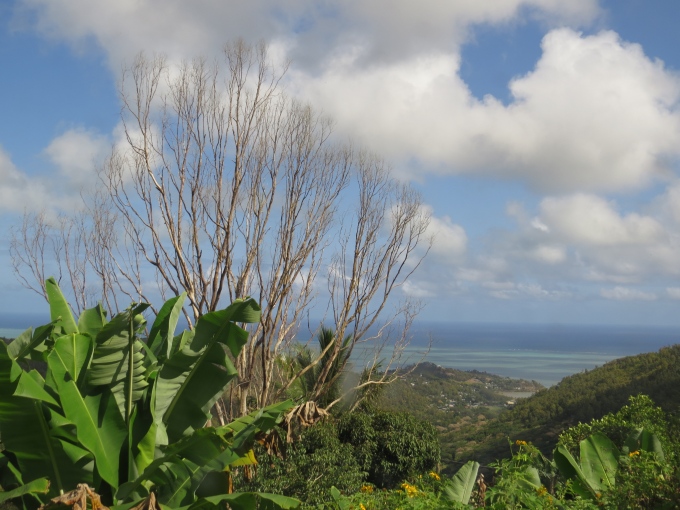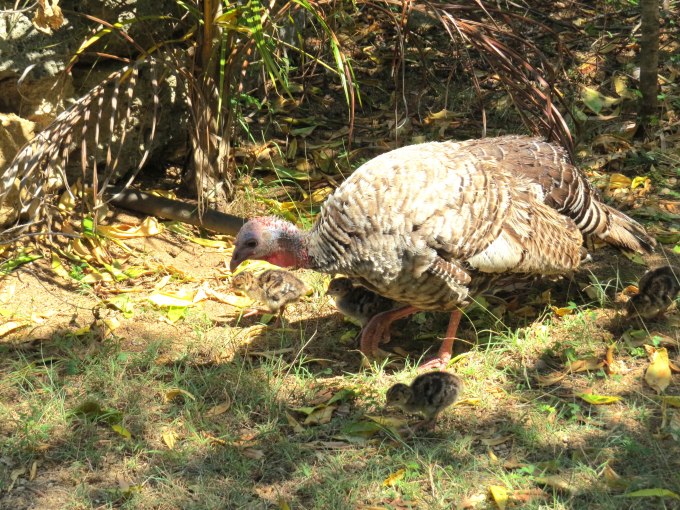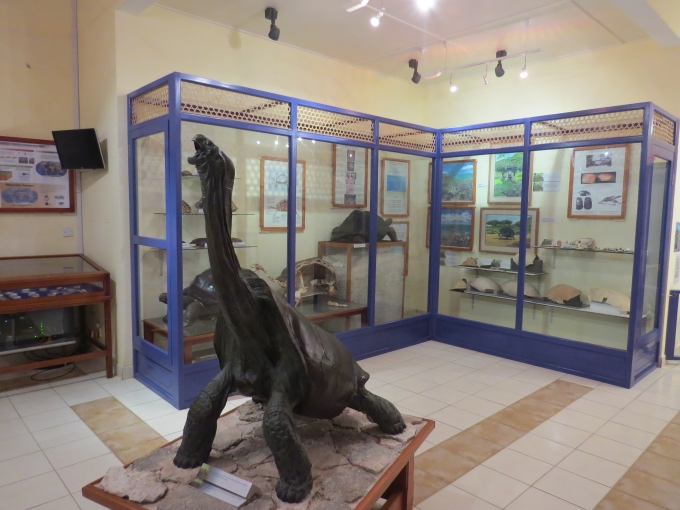Francois Leguat Giant Tortoise and Cave Reserve Pt. 1
/Anse Quitor, Ile Rodrigues
There was nothing in our 2006 version guide book about a tortoise reserve on Rodrigues, but other cruisers had mentioned visiting so we inquired about it at the Visitor Center. The Francois Leguat Giant Tortoise and Cave Reserve was open daily and located on the southwest end of the island and, yes, a bus went nearby (maybe a little walk). We checked at the bus station, confirmed departure times and made plans for an early morning departure. The buses here are similar to those in most third world countries. They're old, rough-running, brightly colored and have endearing names like Lover's Choice, Prince and New Roshni Princess. We reconfirmed we were on the right bus and sat back for a cross-island adventure.
We asked the money collector fellow to let us know when to get off the bus. He was very pleasant and accommodating as he collected our 31 Rps each (about a $1) for what turned out to be a 1:05 hr ride.
The narrow paved road out of Port Mathurin was all up. A series of switchbacks had the bus chugging loudly and laboriously up above the port. The views of the sea below, even from our bus window, were beautiful.
Bus stops were frequent and it took significant effort for the little bus to get moving again up the steep incline. We stopped in several little towns … Mont Lubin, Petit Gabriel, La Ferme, La Fouche. It was a school day and all the kids were in uniforms getting to school.
After about 45 minutes, I glanced at him inquiringly and he nodded “Just a little longer.” Finally, we saw a sign for the Reserve, the bus stopped and the conductor motioned us to get off and pointed towards a rather narrow road up a hill. “It's about a 20-25 minute walk”, he said.
We walked … and walked … and walked … up hills, down hills, around corners, up more hills. We were walking at a reasonable clip and after 25 minutes, we kind of expected the Reserve to be right around the corner. It wasn't. We saw another sign … at least we were heading in the right direction. One thing about walking, you get to see lots of things you'd miss if you were whizzing by in a car. We saw small houses and lots of goats and cows. The earth is bright red and there were lots of flowers and a few gardens along the way. The land was rocky and not very arable. Some industrious folks had terraced the land to make it as useful as possible.
PVC water pipes lay along side the road like black snakes, sometimes crossing above the road to get to the desired destination. We met a few people walking along and they all smiled and wished us a “bonjour” as they passed. One remarkable sight was the number of gigantic spiders in huge webs between utility wires and tree branches. Not just one spider, mind you, but we counted as many as 17 in one massive web. I learned later that these are red-legged golden orb-web spiders (Nephila inaurata), native to several Indian Ocean islands. They're non-poisonous, but even birds and bats get caught in their huge, strong, sticky webs. Evidently, they normally string several webs together to form enormous "homes" in order to cover as much surface area as possible. Great to know, so I can avoid them at all costs.
About 45 minutes into our “little” walk, we saw another sign announcing 500m to the Reserve. The entrance road was dirt … uneven, rough and rutted. Volcanic rock poked up in the fields alongside the road, but up ahead, it looked like maybe we had arrived.
We pay our entrance fee of $295Rps ($10US) and looked for a place to relax for a few minutes. There was a guided tour leaving immediately. We begged off in favor of a cup of coffee in the pleasant little outdoor resto (restaurant) and booked ourselves on the next tour. In the meantime, we sipped our Nescafes and watched our little piece of the the world go by. As we sipped our coffee, a very unexpected turkey hen gobbled by a few feet from us, with her brood close by. You just never know what to expect.
We were invited to visit the little museum while we waited. No one else was around and it was dark when we entered. Motion sensing lights popped on as we moved from one small room to the next. One room was dedicated to the discovery of the island and its volcanic origins. Displays of early maps decorated the walls. A larger room displayed the flora and fauna of the island and was quite interesting.
The island was teeming with native wildlife when the Europeans first arrived. Tortoises by the thousands roamed the land. Birdlife was plentiful including the“solitaire” (like a dodo bird), but all were traded or eaten to extinction in a period of of about 50 years. Now only one fruit bat species is all that remains of endemic mammals. There are only two endemic bird species still around and they are considered endangered.










